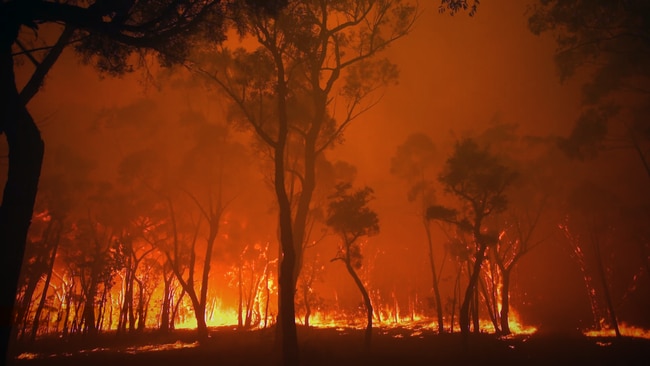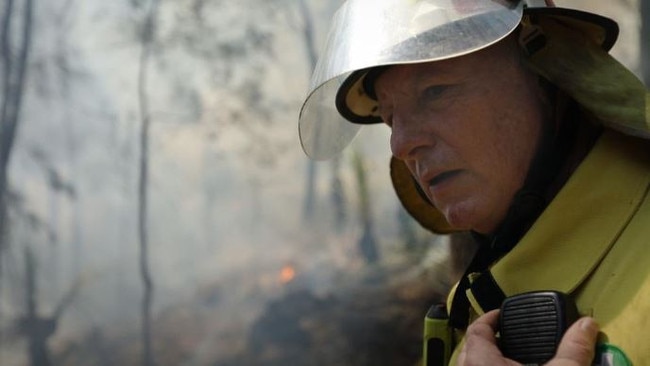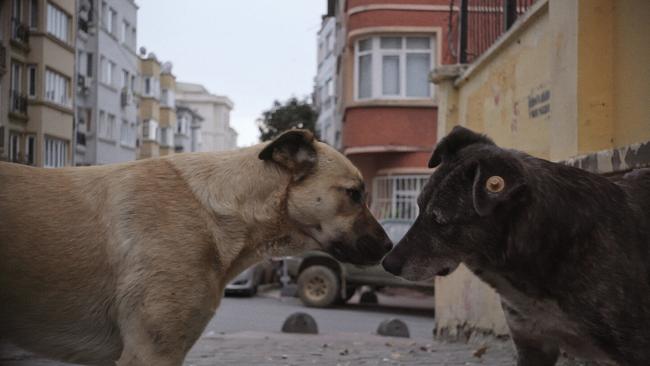Burning film, seeing through the smoke
The film Burning argues that the main cause of The Black Summer bushfires of 2019-20 was climate change and that we need to act now. Yet a debate is not a debate when just one side speaks.

Burning (CTC)
Amazon Prime
★★★
The Black Summer bushfires of 2019-2020 raged through 18 million hectares, burned down 3000 homes, killed 33 people, including nine firefighters, and more than one billion animals. There is little dispute about what was turned to ash but there is heated disagreement over what caused the conflagration.
The documentary Burning, directed by Oscar-winning Australian filmmaker Eva Orner, puts the case that the main cause was climate change.
The warning throughout this 86-minute movie is that such infernos will recur – soon - unless we take dramatic steps to dampen global warming.
Almost all of the blame for this – for Black Summer and for the risk of a catastrophic future – is placed on Scott Morrison. The end credits note that the Prime Minister declined to be interviewed.
Personally, I think global warming is real and poses an existential threat to the human species. I want to make that clear as this film, which I think has its flaws, paints the “Murdoch media” as a meddler of misinformation about climate change.
The main interviews are with former fire commissioner Greg Mullins, former (and only, as he points out) climate commissioner Tim Flannery, journalist Marian Wilkinson, Indigenous author Bruce Pascoe and young climate activist Daisy Jeffrey.
So it is a roll call of high-profile people on one side of the argument.
I am more or less on the same side, as mentioned, but I can have that shared belief and still think this should be a more assiduous film.

Their ardent, if at times strident, criticisms of the federal coalition government and heartfelt fears for the future should be listened to. Mullins in particular is rawly emotional, funny at times and ultimately optimistic.
Yet a debate is not a debate when just one side speaks. No one from the other side is interviewed. Instead, their comments, from speeches and media appearances, are merged into the film, concocting exchanges of opinion that did not happen, ones in which one side loses every time. No one denies, for example, that Alan Jones, in his time at Sky News, called global warming a hoax, or that Morrison dissed electric cars and held up a lump of coal during Question Time.
However the selective stitching of such file footage with the done-for-the-film in-person interviews is misguided.
It means the filmmaker chooses what to include and omit from the people she disagrees with.
Is it OK for a film to be a polemic rather than a balanced investigation? I suppose there are no rules against it, as Michael Moore has shown, but the result in this case is a pulpit for preaching to the converted, which is almost the opposite of what we need on such an important issue.
As the constitutional lawyer Greg Craven wrote in this newspaper following the Glasgow conference, the polarising nature of this debate risks turning people into “climate confusionists” who do not trust either side.
“Climate activists are so certain, loud and aggressive they frighten me,” he wrote. “Their opponents seem sleazy, mouthing platitudes while doing deals. What a choice.”
The one interview subject who stands out is Mike Cannon-Brookes, the billionaire co-founder of the software firm Atlassian, who is working to turn Australia into the world’s leading exporter of solar energy. “Mining is not a bad thing,’’ he says, which alone separates him from the assembled crowd. He sees a different future, however, where we focus less on coal and more on the sun.
No one from the federal Labor Opposition is interviewed. There is no note about that in the end credits. Nor is it mentioned that Daisy Jeffrey’s father, James Jeffrey, a former colleague on this newspaper, is Anthony Albanese’s speechwriter. The younger Jeffrey comes across as smart, brave and personally passionate about climate change, as she and young people should be.
Orner won an Oscar as a producer of Taxi to the Dark Side, a 2007 documentary about the killing of a 22-year-old Afghan taxi driver at Bagram Air Base. That film, directed by Alex Gibney, shone light into dark places and forced changes to be made.
The best parts of Burning focus on ordinary people who lived through the fires, such as then 22-year-old Michael Harrington, who talks about the ongoing psychological damage he suffers, and Amber Stokes, whose daughter Saga was born, early, undersized and with a placenta like a smoker’s lung, on New Year’s Eve 2019. More of this, less of the politics, less of the pulpit, and this movie could change hearts and minds.
-
Stray (M)
In cinemas
★★★½
Recently I reviewed Fellini Forward, an intriguing film in which artificial intelligence is asked to help make a movie in the manner of the Italian great Federico Fellini. In Stray, American director Elizabeth Lo does something different but similar. This is a 72-minute documentary directed by dogs.
The dogs in question are stray mutts in Istanbul. New York-based Lo went there because Turkey, after decades of canine persecution, is now one of the few countries where it is illegal to euthanase or impound homeless hounds.
As in Fellini Forward, humans are involved in this film – Lo is also the cinematographer and editor – but it’s the non-human brains that call the shots.
Lo, a dog lover, fesses up to this in the production notes. She shot the footage between 2017 and 2019. The light bulb moment came when she decided to step back and allow her debut feature to become “an experiment in what would happen if we left a film’s narrative up to dogs”.
The result is a quietly absorbing film that broadens and challenges the use of the word “stray”.
We see lots of dogs, but the leading trio is the hazel-eyed, tan-haired Zeytin, who looks like a labrador cross, Nazar, a darker coloured mongrel of similar size, and Kartal, an adorable black-and-white pup, one of five in a stray litter.
We also meet three young men who are refugees from Syria. They squat in abandoned buildings, beg for money, sniff glue and befriend the dogs, their fellow strays.
There is no narration and there are no interviews with people or dogs. We hear snatches of people’s conversations – women complaining about their husbands, for example – as the dogs walk on by, observant but indifferent.
As the director notes, unlike pets, strays “are not only defined by their relationship to humans”. There is an amusing moment when two fur babies, on collar and lead and wearing yellow rain jackets, walk past Zeytin. She looks at them, but whatever she thinks she keeps to herself.

The camera is held at dog’s-eye level, which means the director had to film on the crouch. The sound designer, Ernst Karel, who worked on the superb 2014 Russian film Leviathan, immerses us in this canine point of view, from the roar of traffic to the rustle of ripped open garbage bags, where dinner can be found, to the shouts of people who don’t think dogs should crap in the street. All of this is natural. It’s the world from a dog’s gaze. Food is important. People can’t be trusted. There are no animated, smart-talking Wes Anderson Isle of Dogs kinds in this neighbourhood.
Yet there is unplanned humour. During a women’s rights march, for example, two dogs, one male and one female, prove they have no idea what the people massed around them are talking about.
This movie can be seen as a companion piece to Kedi, Ceyda Torun’s 2016 documentary about the stray cats on the streets of Istanbul, which Time magazine named as one of its films of the year. There are a few feline encounters here, too.
I watched Stray with my two canine companions, who slept throughout. Whether they did so in approval or disapproval I will never know, which is perhaps one of the points of this film.
Even so, I’m confident they pricked their ears during the final scene, where Zeytin – her name means “olive” in Turkish – responds to the muezzin’s call to prayer in a quite beautiful way.




To join the conversation, please log in. Don't have an account? Register
Join the conversation, you are commenting as Logout